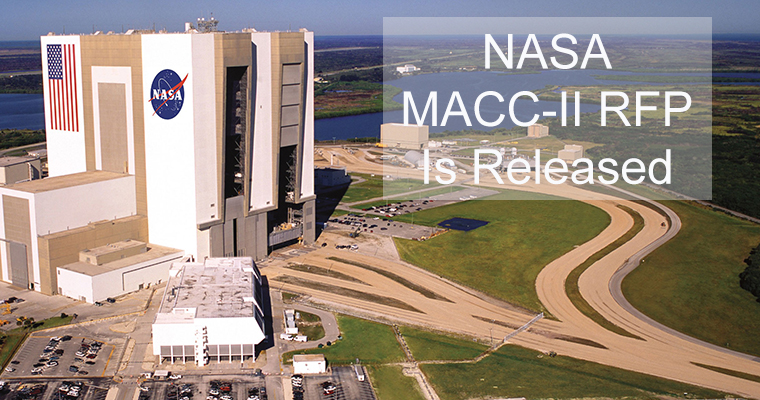The NASA MACC-II multiple award IDIQ is out, and proposals are due in on May 23rd. This regionalized IDIQ is a $3 billion construction and design/build services contract for an 8 year period for the Southeastern Region. This covers John C. Stenni Space Center in Mississippi, Johnson Space Center in Texas (includes White Sands Test Facility in New Mexico), Kennedy Space Center in Florida, and Marshall Space Flight Center in Alabama (including Michoud Assembly Facility in Louisiana). Each of these 4 centers has one seed project.
Awards and Bonding Requirements:
There will be 24 awardees, including 4 SB, 4 WOSB, 4 SDVOSB, 4 HUBZone, 4 8(a) and 4 large companies. The 20 set-asides must provide proof of bonding for $10m per project and an aggregate of $30m. The 4 Large companies must provide proof of bonding for $100m per project and at least $1 billion for aggregate.
Evaluation:
Evaluation will be based on 3 factors:
- Factor 1 – Technical Acceptability – (Acceptable/Unacceptable)
- Factor 2 – Past Performance (Looking for first 4 company in each category with “Very High Level of Confidence” rating)
- Factor 3 – Price (Looking for lowest price)
Although NASA calls it best value, it is really very much biased towards lowest price. The way NASA will evaluate is that first, they review all proposals for being compliant with the requirements of Factor 1 (Technical Acceptability) – this includes making sure that the proof of bonding is present and a Small Business Subcontracting Plan is included for large companies. Some proposals are dropped there. Then they will line up proposals based on set-aside category (business size) and lowest price and start reviewing them for having “Very High Level of Confidence” rating. What that means is that if you do indeed have the best past performance in the world yet your price is higher than 4 other companies (in your set-aside category) that have “Very High Level of Confidence” rating for their past performance, then you lose. They are not going to even evaluate your past performance. So although you need to have an exceptional past performance, the evaluation procedure is geared towards having the lowest price possible as well. Note that price is evaluated for the 4 seed projects that are provided.
Recommendations:
Based on the above evaluation process I have the following recommendations to companies participating in this bid:
- Since the price you give is for the seed projects only, I suggest that you risk and give the lowest price with minimum or no profit built in. You might not have any profit in executing the first project, worst case some loss, but then you have the MACC-II contract in your pocket for the next 8 That is you can get your profit in the future task orders and use the seed project pricing to get a foothold into the contract.
- To get a “Very High Level of Confidence” rating, you need to pick the best projects performed by you and your teaming partners that are recent (completed or started within the past 3 years). They must also exceed $500k and include general construction contracts involving Design Build, LEED, BIM within various disciplines, and management of multiple subcontractors in different engineering disciplines. Therefore, how your past performance projects are worded and presented is of utmost importance. Don’t just rely on the actual content and context of the project being in compliance; it must be so worded and presented to get that “Very High Level of Confidence” and NASA evaluators are indeed picky in this area.
In Summary
The NASA MACC-II is, indeed, a great opportunity for all construction companies, small and large, to bring them a steady income for the next eight years. To be able to win, you need to invest and sacrifice your profit and even accept some loss for the first seed project by lowering your price as much as you can. You must also get help (I suggest outside help) and prepare a very directed past performance volume that is worded and crafted in the way that NASA evaluators want it so that you can get win a place in one of those four slots in your set-aside category.

